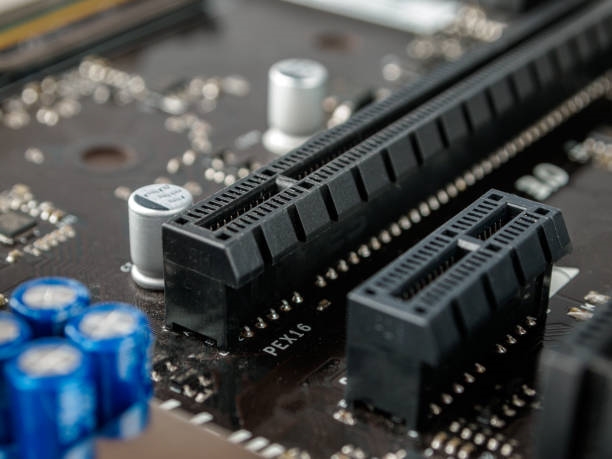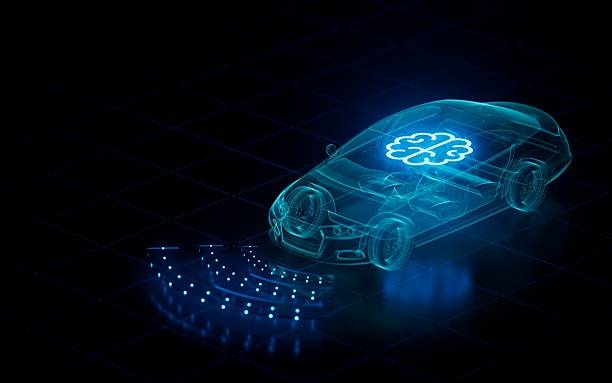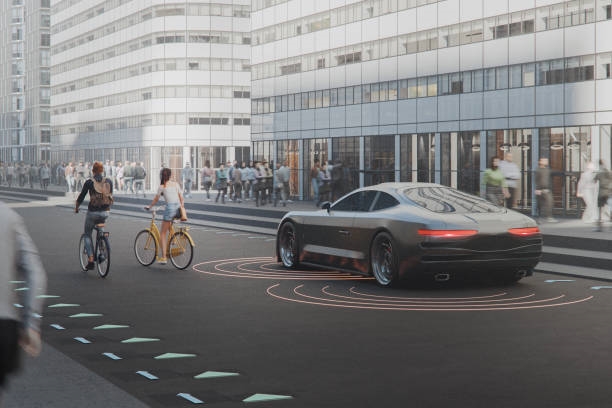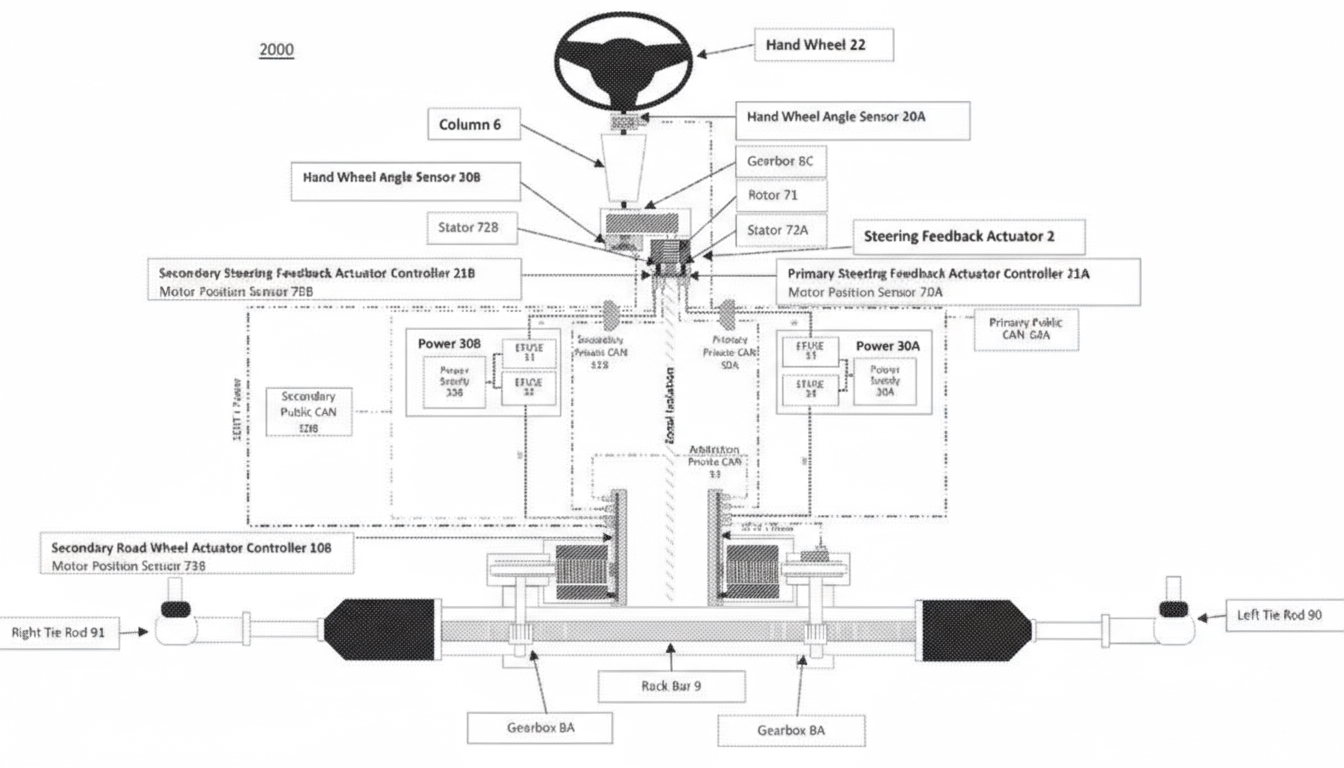Evolution of In-Vehicle Ethernet
The widespread adoption of in-vehicle Ethernet is closely tied to the evolution of automotive electrification and intelligence. In the era of distributed electronic and electrical architecture (EEA), the communication volume between electronic control units (ECUs) was minimal, and traditional CAN buses sufficed. However, with the shift toward centralized computing and zonal control, the number of in-vehicle sensors has surged, resulting in significantly greater data volumes and bandwidth requirements. In response, in-vehicle Ethernet has emerged as a suitable networking solution to meet the demands of interconnecting central computing platforms with regional controllers.
In modern architectures, domain controllers are interconnected using Ethernet, often arranged in a ring topology to ensure reliability. Internally, each domain still adopts a star topology. Due to the inconsistent evolution of ECUs, various communication technologies coexist, including CAN, CAN-FD, LIN, and FlexRay. Meanwhile, high-data-rate devices such as cameras and displays require dedicated serializer-deserializer (SerDes) connections.
Integrated domain controller architectures organize vehicle systems into domains¡ªsuch as body, ADAS, infotainment, chassis, and power¡ªinterconnected via a central gateway. In contrast, centralized computing with zonal control consolidates domain controllers into a central unit, with ECUs distributed across different zones based on physical layout. Zone controllers serve as relay nodes, enabling Ethernet-to-bus protocol conversion.
High-Speed Video Transmission (FPD-Link)
Advanced sensor applications in intelligent connected vehicles demand high-speed video transmission to link sensors (e.g., cameras, displays) to central computing platforms. These connections require high bandwidth and low latency, typically using point-to-point topology. For instance, an ADAS camera sensor might require 2.5 Gbps bandwidth, with over ten such cameras deployed per vehicle¡ªfar exceeding in-vehicle Ethernet capacity. As such, dedicated high-speed interfaces are necessary.
These components connect to domain controllers via high-speed video transmission interfaces. The smart cockpit controller, for example, handles both input (cabin cameras) and output (displays), with varying cable types and interfaces used across configurations.
In-vehicle interfaces must also support long-distance transmission and electromagnetic compatibility (EMC). Compared to consumer electronics, automotive environments are harsher, with greater transmission distances (up to 10 meters) and higher electromagnetic interference. Parallel signal transmission¡ªcommon in early designs¡ªrequired large connectors and heavy cables, which introduced high cost and error rates over distance.
To overcome these challenges, serial transmission techniques replace parallel interfaces. Data¡ªvideo, control, audio¡ªis serialized and sent via a single channel, then deserialized at the receiving end to restore parallel format, supporting the required high bandwidth, low latency, and long-distance performance.
A key technology is Low-Voltage Differential Signaling (LVDS), which uses low power and voltage to transmit differential signals across a pair of wires with minimal interference or loss. Built on LVDS, FPD-Link (Flat Panel Display Link) was developed to serialize RGB signals. For example, FPD-Link I converts 21 parallel lines into 4 LVDS pairs.
FPD-Link III transitions to CML signaling and supports data transmission up to 6 Gbps over shielded twisted pair (STP) or coaxial cables, using one physical conductor for full-duplex communication. Forward channels carry video/audio, while reverse channels transmit control or status data without time-division multiplexing.
FPD-Link devices also support I2C and GPIO communication over the same link. To mitigate insertion loss and inter-symbol interference, equalization modules amplify and compensate for high-frequency components. The Adaptive Equalizer (AEQ) module automatically adjusts equalization levels upon power-up, accommodating cable aging, thermal drift, and individual differences. AEQ modules often include Clock Data Recovery (CDR) circuitry to suppress jitter and restore clean signal timing.
Streaming Media in Vehicles
Streaming media refers to the real-time transmission of compressed audio and video over a network. In modern vehicles, streaming applications include rear-view mirror displays and ADAS-generated content rendered for playback on in-cabin displays.
Key Concepts
Resolution: Indicates the number of pixels in an image. ¡°P¡± denotes vertical lines (e.g., 720P = 720 lines), and ¡°K¡± refers to thousands of horizontal pixels. Common formats include:
- 720P: 1280¡Á720
- 1080P: 1920¡Á1080
- 2K: 2560¡Á1440
- 4K: 3840¡Á2160
Frame Rate (fps): Refers to how many frames are displayed per second. Common frame rates are 24, 30, or 60 fps. Higher frame rates provide smoother video but demand more processing power.
Encoding/Decoding: Video and audio are compressed using codecs. H.264 and H.265 are common formats, with H.265 offering greater efficiency at the cost of requiring hardware support. For instance, iPhone's ¡°High Efficiency¡± format corresponds to H.265, while ¡°Most Compatible¡± uses H.264.
End-to-End Streaming Architecture
In a typical setup, the intelligent driving domain controller renders video, encodes it, and encapsulates it into PES (Packetized Elementary Stream) format, which is then wrapped into MPEG-TS (Transport Stream) format. TS packets are transmitted using the RTP protocol over standard Ethernet layers (UDP/IP).
The receiver (e.g., cockpit controller) reverses the encapsulation process: extracting RTP, then TS, then PES, and finally decoding the video for playback. A control stream transmitted via RTCP allows the receiver to provide real-time feedback (e.g., switching from 4K to 720P under poor network conditions).
This architecture distinguishes streaming media from local playback by emphasizing real-time transmission. Sensor data processed and rendered by the domain controller is streamed across controllers using standardized protocols like UDP, IP, RTP, and RTCP.
PES and TS Streams
Raw audio/video streams are first encapsulated into PES format, adding headers and metadata without altering content. PES packets are further split into fixed-size 188-byte TS packets, standardizing the transmission unit for error-tolerant transport. TS headers contain key fields like PID (Packet Identifier) to identify the stream source.
RTP Protocol Overview
RTP (Real-time Transport Protocol) defines the standard packet format for real-time audio and video transmission over Ethernet. It operates atop UDP, often alongside its control counterpart, RTCP. While RTP doesn't guarantee delivery or ordering, it provides essential real-time metadata including timestamps, sequence numbers, payload types, and source identifiers.
Key RTP header fields include version (V), padding (P), extension (X), CSRC count (CC), marker (M), payload type, sequence number, timestamp, SSRC identifier, and CSRC identifiers. Together, these ensure proper stream identification, synchronization, and playback continuity across networked systems.
 ALLPCB
ALLPCB







